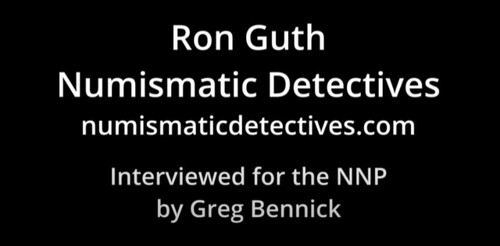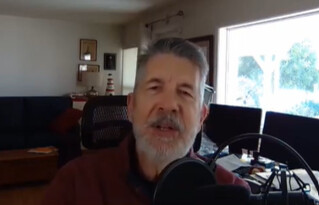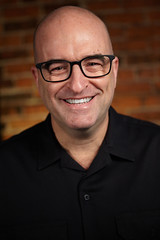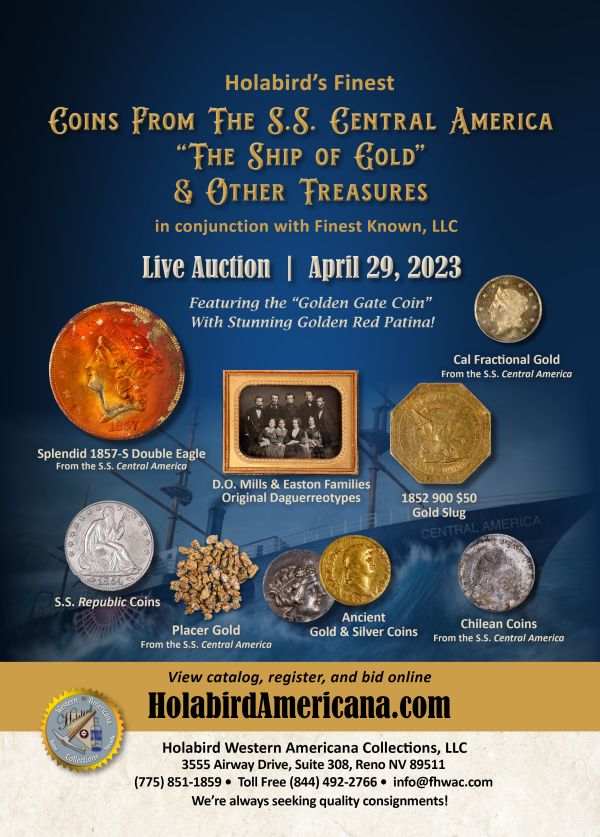
PREV ARTICLE
NEXT ARTICLE
FULL ISSUE
PREV FULL ISSUE
RON GUTH INTERVIEW, PART THREEGreg Bennick's latest interview for the Newman Numismatic Portal is with author, researcher and Numismatic Detective Ron Guth. Here's the third part, where Ron talks abotu his numismatic detective work. -Editor
Greg Bennick: Have there been any specific coins that you've been most excited about finding
or connecting to their history? And the reason I ask that is because about ten years ago or so, I
was thumbing through a Heritage catalog and I found an error coin in a Heritage catalog, a
photo of it, and my mind immediately jumped to a book on error coins, which had come out in
the early seventies and a photo in that book of a coin that I'd coveted when I was a kid. And I
went,
When I went through all the images of the 1792 disme, I found out that this silver version was a copy of I believe it was the Norweb coin. And this is a coin that was about to be certified by PCGS, who graded all the coins before the sale. And I said stop the presses, hold your horses, we don't want to certify this coin because that would be like a $750,000 mistake. So that was one of the really coups that I enjoyed because of the image database that I built. So, there's a lot of value in this kind of research. When I do the provenance research for collectors who have high end coins, obviously they want to make sure that it's a legitimate coin, it's authentic, it's not stolen, it's not out of say a major theft like Yale University or the DuPont collection, which coins are still showing up from those. So again, that detective part of it, you have to have the information, you have to have the catalogs, you have to have access to the Newman Numismatic Portal. You have to have the images. So it's just a wonderful building of this massive content database that makes this sort of thing very useful and valuable. Greg Bennick: Now, you'd mentioned that sometimes, I think you said, intentionally or unintentionally, the Eliasberg pedigree is stripped from a coin. Now, if I owned an Eliasberg pedigreed coin, I can't imagine resubmitting it and saying please PCGS stripped this famous name from my holder next time. Why would people intentionally strip the pedigree from a coin, specifically with the Eliasberg pedigree? Why would that happen? Ron Guth: Well, I said intentionally or unintentionally. Intentionally is when someone buys a coin and they don't want the new customer to find out where it came from primarily because it has a higher grade and a higher value. You know, if you buy a coin and whether it's from Eliasberg or somebody else, if you buy a coin for $1,000 and you get it upgraded, it's worth ten times what you paid for it. Which happens fairly frequently. You know, you don't want to sort of hide that information so that's what happens. And when I reattach the provenance to a coin, it reveals all these issues that are present in the coin industry. And grade-flation is one that is like the dirty little secret of numismatics, but everybody knows it exists. And I can give you countless examples of where coins have gone from. You know, AU55 to 58 to 60 or 62 to 63 to 64, so economics is a primary reason for ignoring a prior pedigree. Greg Bennick: And just as an aside, grade-flation has to stop somewhere, right? Meaning that we've seen this slow creep over the last couple of decades as grading standards have changed and a coin that was once this, is now considered that. But there has to be a limit, right, because we've got a ceiling of MS70, for example, and an AU 58 coin isn't going to miraculously, 30 years from now, be declared MS70 because there's a whole realm of grades beyond that to consider. Where does grade-flation stop, in your opinion? We've got to be reaching the end, right, or maybe not? Ron Guth: Yeah, I think we're reaching the end. And you're right, there is a ceiling, you know, 70 is the ceiling, but coins also maxed out. I mean there's a point where it becomes ridiculous to call a coin a 66 when it's not a 66. And people can see it and it's just too obvious. The grading services have to maintain their reputation, I mean, the reputation is all they have. So the quality of their grading doesn't necessarily have to be on a continuum, but if you're having grade.flation, it's one thing for a coin to leapfrog another, but if the rising tide lifts all the boats together, then it's okay. If you look at the condition census of a coin, which is the list of the top ten finest examples. And let's say you compare it to the Early American Coppers Club, they have a very conservative grading standard and they have a traditional old time list of the condition Census coins, the top ten coins. While PCGS and NGC, they have the market grading, the commercial grading, so to speak. And so if you look at it like a Goldberg's catalog, where they were working with Chris McCawley and Bob Grellman, they'll have an EAC grade, they'll have a PCGS grade, and sometimes they'll have the cataloger's opinion. So there could be three different grades on a coin, and that's okay, as long as people understand that the PCGS grade is not equal to an EAC grade. And that the PCGS grade or NGC grade, as long as they're all ranked the same rank as they are in the EAC condition census, then it's okay. But it's important for people to understand that these are separate grading systems and there will be a much greater disparity between an EAC and a PCGS than there will be between a PCGS grade from today and one from five years ago on the same coin. So grade-flation is an issue in our industry, but we've all moved up along with it as it's progressed.
Greg Bennick: Switching subjects, tell me about the
Ron Guth: Yeah, I used to do meet the expert for PCGS when we were at shows and basically
it's sitting down and answering people's questions. A lot of people are afraid to ask questions
because they don't want to appear stupid. And I tell everybody the only stupid question in
Numismatics is the one that you don't ask. You know, we all started at zero, I started at zero,
you started at zero and we learn things along the way. And unfortunately, in the coin business,
mistakes are expensive or they can be expensive. So to be able to offer somebody some
mentorship or some education or information that can help them avoid those pitfalls that we've
all experienced, I just think that's a great way to get back to the hobby. So I do these Greg Bennick: It's great. On my schedule. I'll definitely be adding that because I think that it'd be really fun. Even just to ask some basic questions, that I'm sure in my mind, are things that I think I know, but maybe I don't, and you probably do. So, I'll look forward to that. I was going to ask on a personal level, what are your favorite coins and why? Do you have personal favorites over the years, whether they're ones you've researched or just personal ones from your own collection? Just personal favorites.
To watch the complete video, see:
To read the complete transcript, see:
To read the earlier E-Sylum articles, see:
Wayne Homren, Editor The Numismatic Bibliomania Society is a non-profit organization promoting numismatic literature. See our web site at coinbooks.org. To submit items for publication in The E-Sylum, write to the Editor at this address: whomren@gmail.com To subscribe go to: https://my.binhost.com/lists/listinfo/esylum All Rights Reserved. NBS Home Page Contact the NBS webmaster 
|



